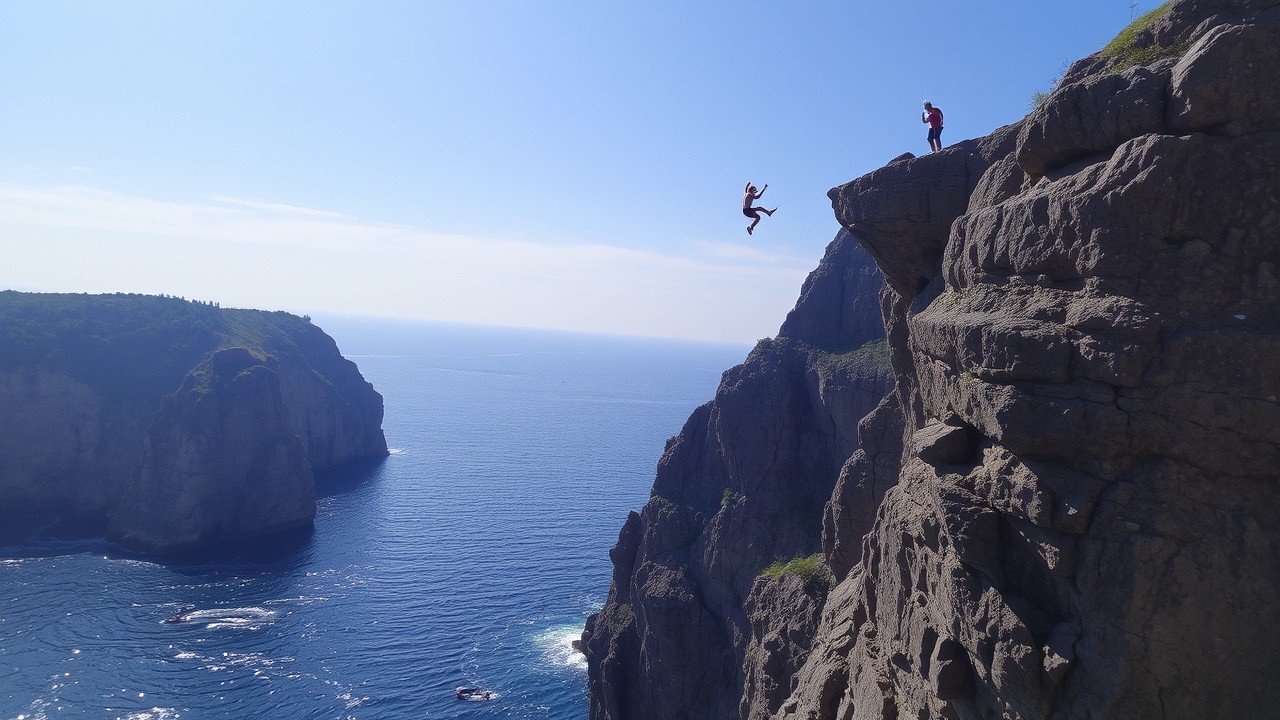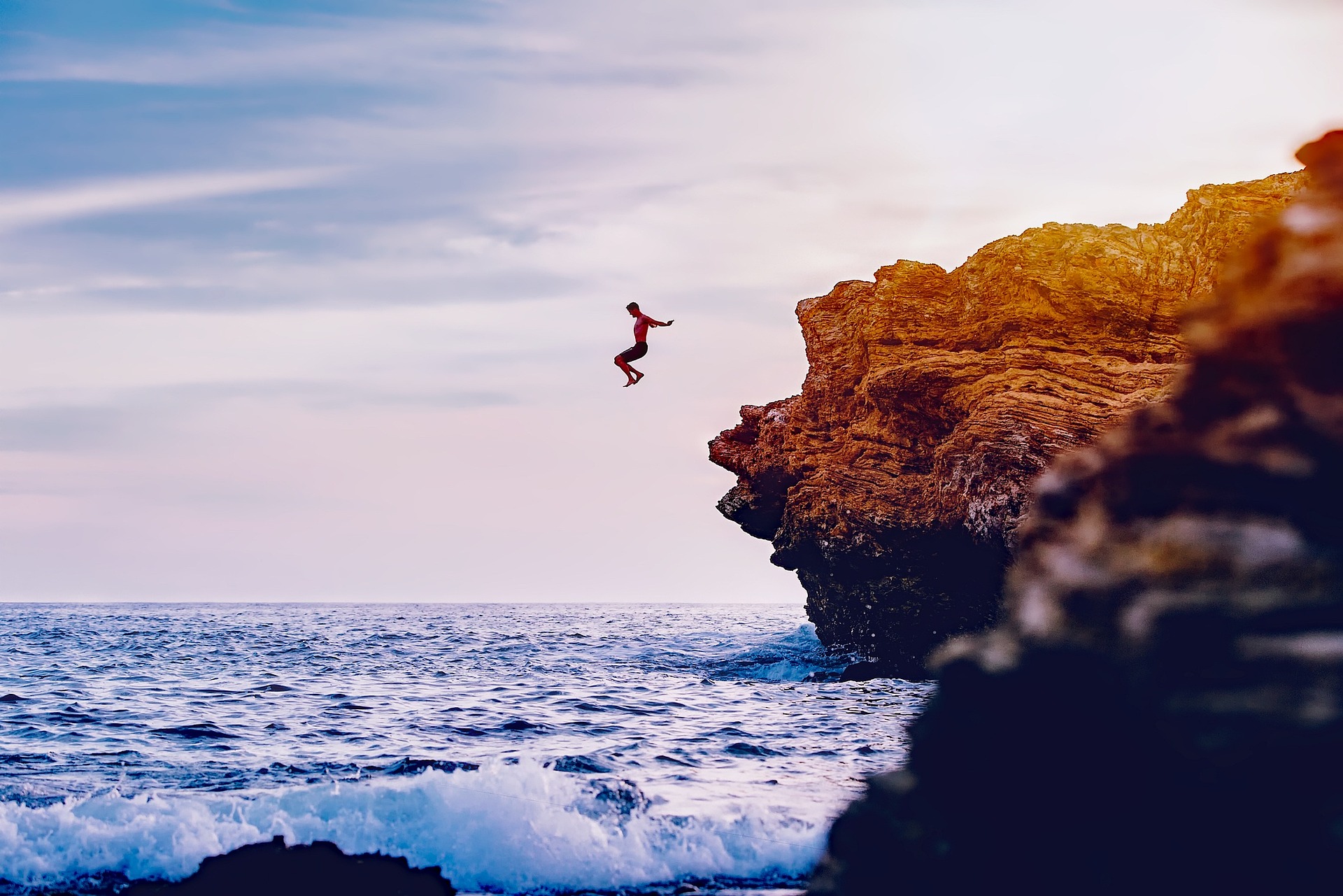Cliff diving is a high-adrenaline activity that blends excitement with the natural world’s raw beauty. Standing at the edge of a towering cliff, you feel the rush of the unknown and the sheer force of nature. But while it’s an unforgettable experience, cliff diving requires preparation and respect for its challenges. Jumping without planning or understanding the risks can result in serious injuries, so cliff diving safety should always come first. Whether you’re new to the sport or a seasoned diver, preparing your body and mind is essential. This guide offers practical tips to help you plan for a safer and more enjoyable cliff dive. By learning the basics and respecting the activity, you can experience the excitement while reducing risks. Enjoy the adventure, but always prioritize safety.
Physical Fitness
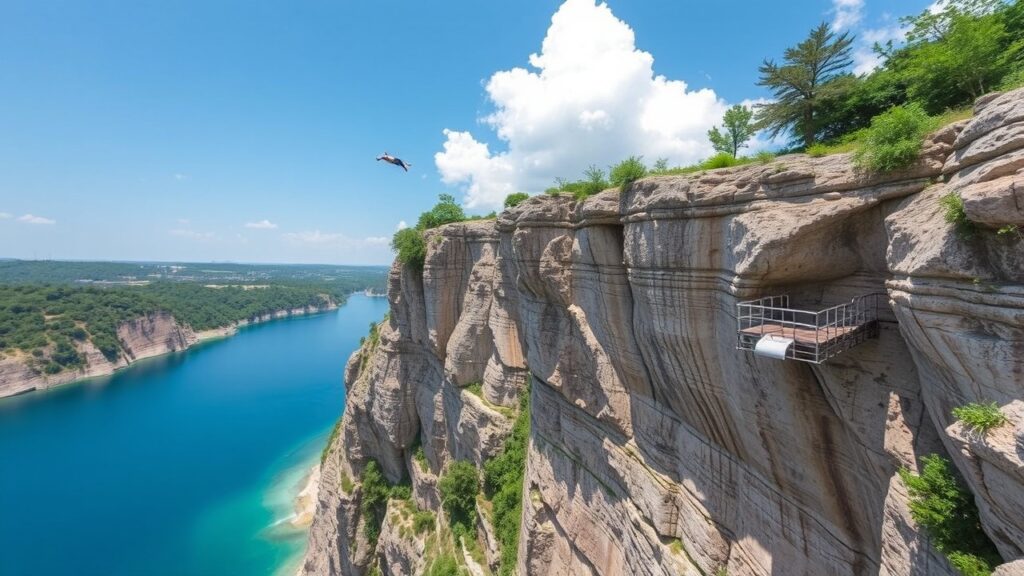
Core Strength
Building a strong core is key for staying stable during a dive and safely handling water entry techniques and impact. Exercises like planks, crunches, and Russian twists help boost strength and improve control in the air. A strong core also lowers the chance of injuries from hard landings, giving you more confidence when diving. It serves as the foundation for athletic movements, keeping your body steady and balanced throughout each dive.
Flexibility
Flexibility is essential for smooth movement and proper body alignment during a dive. Stretching routines and yoga poses, such as downward dog, along with dynamic moves like leg swings, can expand your range of motion. Better flexibility helps you maintain proper form, especially when diving from different heights, leading to more accurate performance. It also makes mid-air adjustments easier, resulting in cleaner, more graceful water entries.
Cardiovascular Fitness
Cliff diving demands quick bursts of energy, so good cardiovascular health is essential for top performance. Activities like swimming laps, sprinting, or regular cycling can improve endurance and speed up recovery after dives. Strong cardiovascular fitness helps avoid fatigue and keeps your performance consistent and sharp. By focusing on your heart health, you can stay prepared for the challenges of adrenaline sports like cliff diving.
Swimming Skills for Cliff Diving
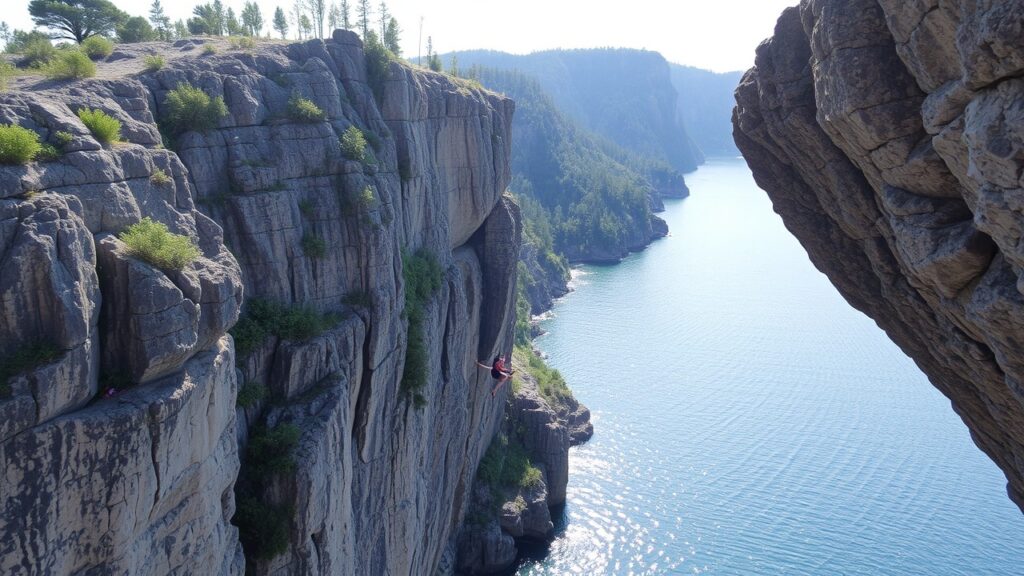
Water Confidence
Being comfortable in the water is essential for cliff diving. To gain this confidence, you must develop good swimming skills. If you’re not already skilled, think about taking swimming lessons. These lessons teach important techniques like breathing, floating, and strokes, which are necessary for anyone who wants to dive. Practicing in different water conditions, such as waves or currents, can also help you adapt and feel more at ease. The more time you spend in the water, the more comfortable you will become, preparing you for any surprises when it’s time to dive.
Deep Water Entry
Learning to enter deep water is crucial for cliff divers. Start by practicing your entry from a standing position in a safe place, like a swimming pool or calm lake. Focus on the right technique when you enter the water, aiming to stay streamlined. This will help you get used to diving into deeper areas, making it easier to handle higher drops where the water can be tough. Gradually increase your height, allowing your body to adjust to the feeling of free-falling before hitting the water.
Water Entry Technique
Knowing how to enter the water correctly is very important. You should dive headfirst with your arms stretched above your head to create a smooth shape that cuts through the water. Keep your body straight and tighten your core as you enter to maintain control during the dive. This method reduces the impact on your body when you hit the water, lowering the chance of injury and improving your diving experience. Regularly practicing these techniques will boost your performance and make cliff diving more enjoyable.
Mental Preparation
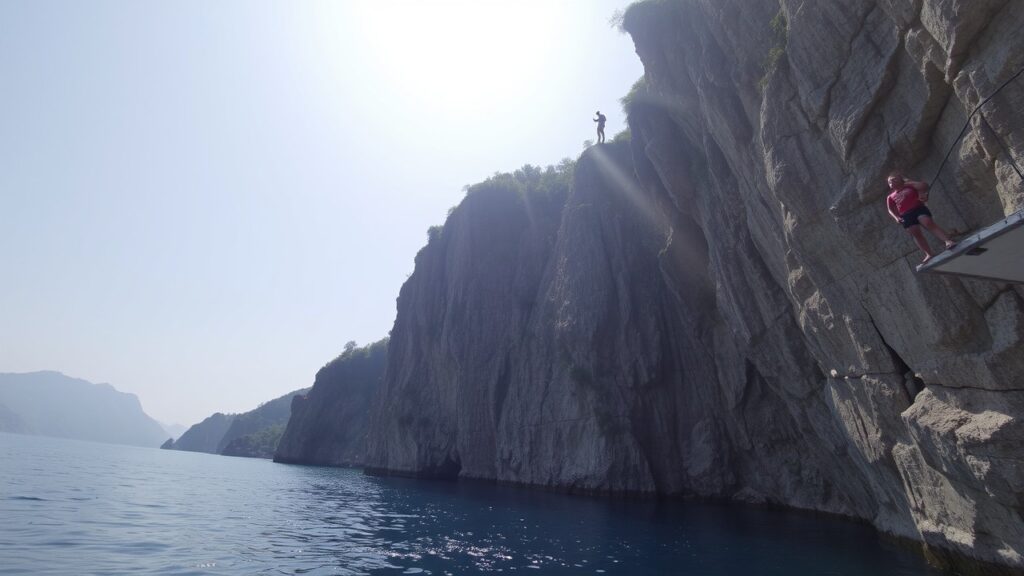
Fear Management
The fear of heights can feel scary at first when cliff diving. The height and the thought of jumping into the water can cause a rush of fear and anxiety. It’s important to use helpful strategies to handle this fear. Deep breathing can be very effective. Taking deep breaths in and slowly letting them out can slow your heart rate and calm your mind. Visualizing the jump ahead of time can also make you feel more comfortable. Imagine yourself diving smoothly and entering the water in a good position. Positive self-talk is another useful way to fight fear. Remind yourself of your skills and past successes to boost your confidence before you dive.
Focus and Concentration
Staying focused is crucial for diving safely. Concentrate on every part of the dive, from the approach to the jump to hitting the water. Practicing mindfulness can improve your focus. Simple mindfulness techniques can include paying attention to your breathing, your heartbeat, and the sounds around you. These practices help clear your mind of distractions and keep you present and committed to the moment.
Risk Assessment
Cliff diving has its risks, so it’s important to understand them before you jump. Take time to evaluate the height you plan to dive from. Check the water conditions, including temperature, depth, and any nearby obstacles, as these factors affect safety. Also, consider the overall safety of the location, including the weather and the number of people around. By making informed choices about where and when to dive, you can improve the chances of having a safe and enjoyable experience.
Choosing the Right Spot for Cliff Diving

Selecting the correct location for cliff diving is essential for safety and enjoyment. Start by checking the water depth below the cliff. The water must be at least three times deeper than the height of the cliff. For example, if the cliff is 10 feet high, the water should be at least 30 feet deep. This depth is important to reduce the risk of injury when you hit the water, ensuring a safer and more exciting jump.
Next, analyze the water conditions before diving. Look closely at the surface of the water. If it is choppy or if strong currents are present, don’t dive. These conditions can increase the risks and lead to accidents. Wait for a calm day with smooth water for the safest and most enjoyable experience. Good weather can greatly enhance your diving adventure.
Also, check the landing area. Make sure the spot is free of obstacles like rocks, logs, or debris that could cause harm when you enter the water. A clear landing zone helps prevent injuries. Additionally, ensure no people, boats, or other watercraft are nearby. Taking these steps creates a safer environment for your cliff diving experience and allows you to focus on the excitement of the jump.
Safety Precautions
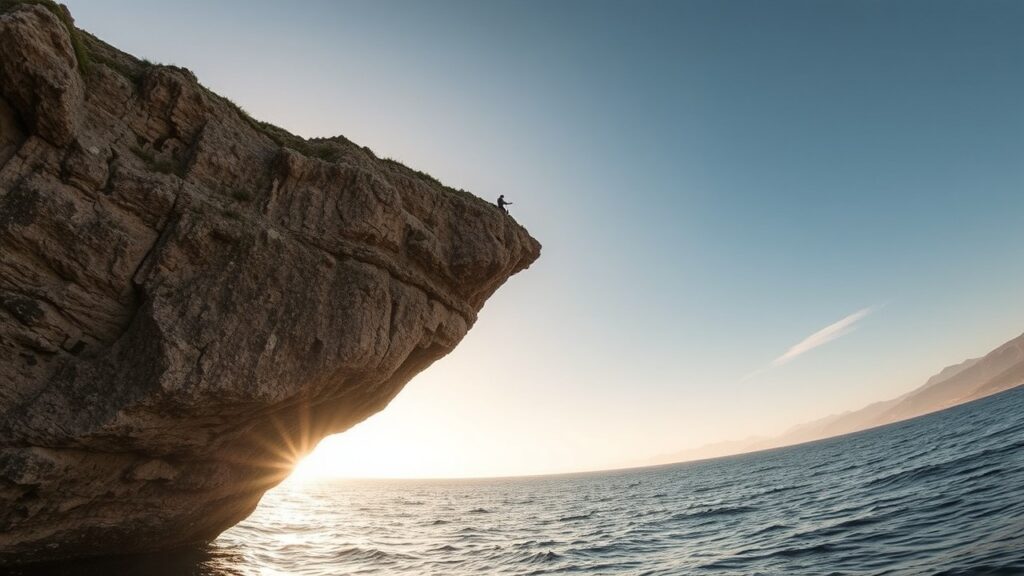
Buddy System
Diving alone is risky and should be avoided. Always dive with a partner who can help if problems arise. This buddy system improves cliff diving safety and makes the experience more enjoyable. Your partner can support you during the dive, keep track of your progress, and assist you in emergencies. Having someone you trust nearby greatly enhances your safety.
Local Knowledge
It’s also important to know the diving area well. Talk to experienced cliff divers or locals for helpful tips. They understand the best diving spots, potential dangers, and how to handle unexpected challenges. Their knowledge can make your dive safer and more enjoyable.
Emergency Preparedness
Be ready for emergencies, as they can happen anytime. Learn the emergency procedures for the area where you will be diving. Know the location of the nearest lifeguard station and have a way to reach emergency services if needed. In case of an accident, having this information can save lives and minimize panic. Creating a solid plan in advance helps keep everyone safe, allowing you to enjoy the dive fully.
Respecting Nature
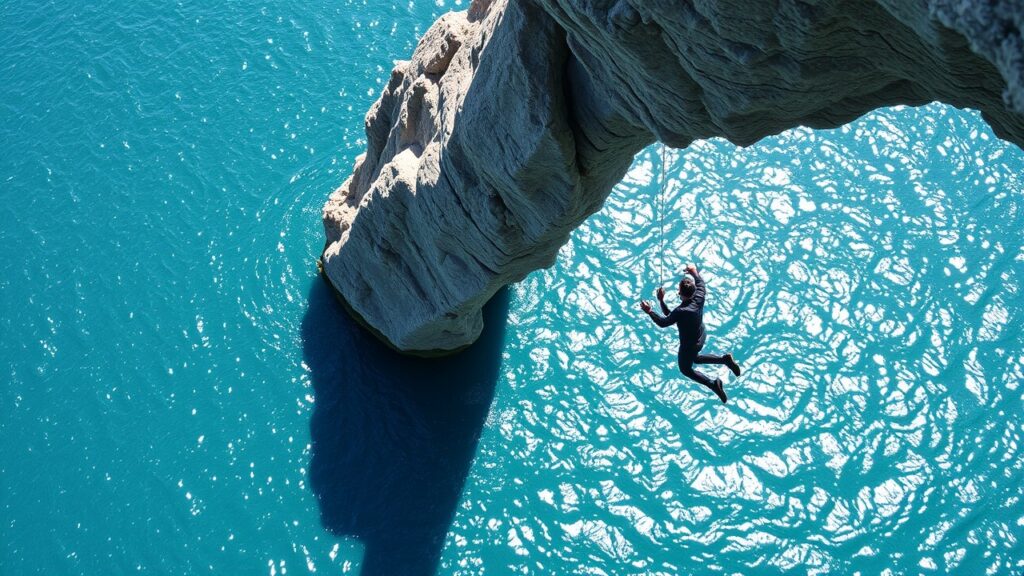
Environmental Awareness
Respecting nature means being responsible during outdoor activities to ensure we positively impact the environment. It’s essential to recognize how our actions, no matter how small, can affect the planet’s balance. Be careful about where you dive, hike, or camp. Avoid fragile areas like coral reefs, wetlands, or endangered habitats. These places host delicate ecosystems that can be easily harmed by human activities, sometimes in ways we might not see right away. A careless act can disturb the natural processes that support life there.
Leave No Trace
Following the principle of leaving no trace is vital for keeping nature beautiful for future generations. Always take your trash with you, no matter how small it seems. This includes cleaning up not just your waste but also any litter you find during your visit, like plastic bottles or food wrappers. Making sure the area stays clean helps preserve it for wildlife and other visitors, allowing everyone to enjoy the great outdoors in its natural state. Our choices today shape the experiences of those who come after us.
Respect Wildlife
Another important part of respecting nature is being mindful of wildlife. Stay aware of the animals in the area, including birds, mammals, insects, and marine life. Keep the safe distance and also do not feed or disturb them. Animals are crucial to their ecosystems, and any disruption can seriously affect their survival and habitats. Observe wildlife from a distance so they can act naturally. By following these guidelines, you enhance your safety and support the health of the environment. These practices build a greater appreciation for nature and encourage a sense of responsibility toward our planet and its inhabitants.
Thank you!
Visit our website to read more helpful articles like this.
